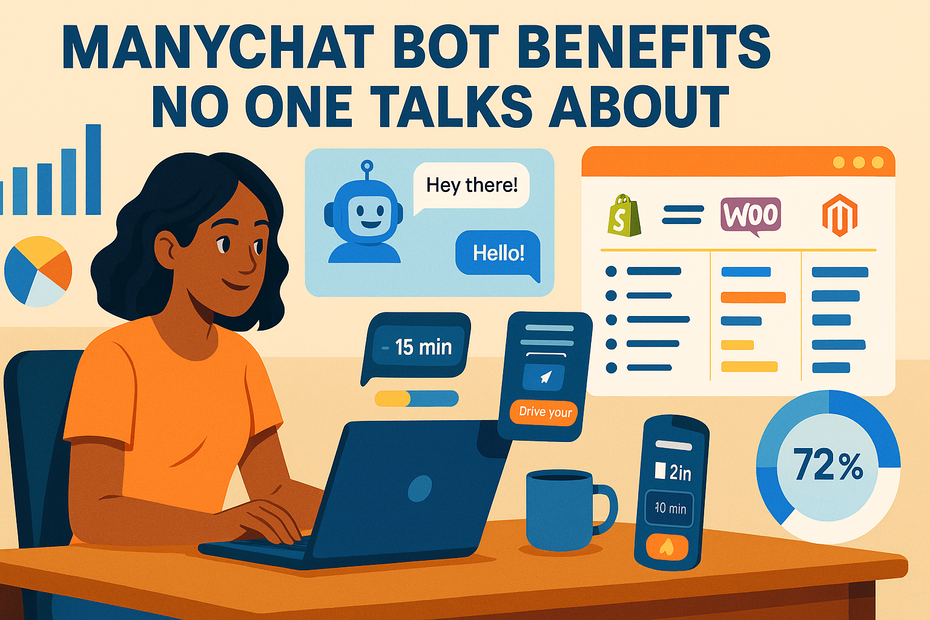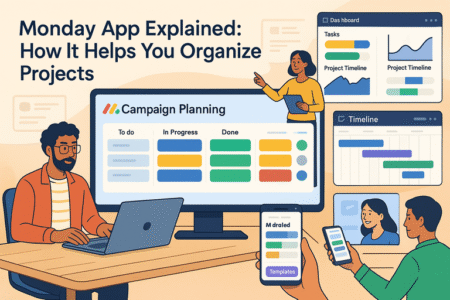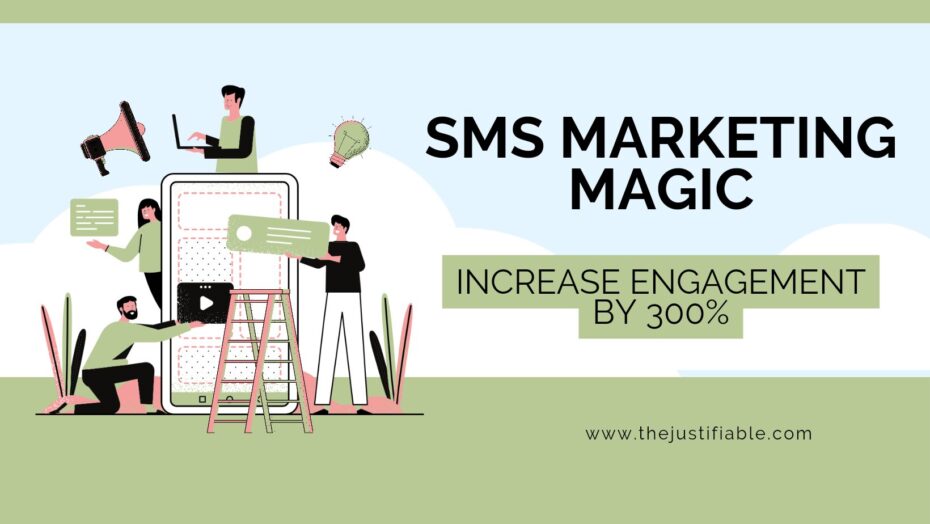Table of Contents
A ManyChat Bot can do far more than send quick replies or automate sales messages. I’ve seen businesses overlook its deeper features, the kind that can quietly transform customer relationships and even internal workflows.
Have you ever wondered what hidden advantages a ManyChat bot offers that most people ignore?
This guide explores those underrated benefits, each with practical insights you can actually use.
Turning ManyChat Bot Into a Customer Data Goldmine
Most people see a ManyChat bot as a way to push messages. I see it as a living notebook of your customer’s thoughts, habits, and behaviors. Every click, every “yes” or “no,” every interaction is data you can use to build stronger relationships.
If you’ve ever wished for a simple way to collect insights without expensive CRM software, your ManyChat bot can be that goldmine.
Collecting Actionable Insights From Simple Interactions
The trick isn’t asking for endless survey responses; it’s about weaving micro-questions into conversations naturally. For example:
- If a user clicks “Learn More,” you instantly know they’re in research mode.
- If they choose “Buy Now,” they’ve self-qualified as ready to purchase.
- Even something as small as choosing between “I love discounts” or “I want VIP perks” tells you how to market to them.
Inside the ManyChat dashboard, go to Flows > Add Button > Action > Set Custom Field. By doing this, you’re not just responding to clicks—you’re storing preferences. Over time, this creates a rich dataset without overwhelming the user.
In my experience, a single campaign with three choice-based buttons gave me more insight than weeks of passive website analytics. You’re essentially creating living, breathing customer surveys that people actually enjoy.
Using Tagging and Segmentation to Refine Targeting
Tags in ManyChat are like sticky notes that help you remember who’s who. When someone clicks “Show me deals,” tag them as “Discount Shoppers.” If another clicks “Learn about features,” tag them as “Feature-Focused.”
Here’s how I usually set it up:
- Inside the flow, add Action > Add Tag whenever a button is pressed.
- Create segments in Audience > Filter > Tag to build targeted lists.
- Send hyper-relevant campaigns to each segment.
What you get is laser-focused messaging. For instance, instead of blasting your whole audience with a generic sale, you can send “Limited-Time Bundle” to the Feature-Focused group and “Extra 20% Off” to the Discount Shoppers. The result? Higher conversions, fewer unsubscribes.
I’ve tested this and seen click-through rates double, just by sending different angles to the right groups. It feels more personal for the customer, and you spend less time guessing.
Building a Customer Profile Without Expensive Tools
A hidden benefit of ManyChat is that you don’t need a big CRM to understand your audience—you can build lightweight customer profiles right inside the bot.
Here’s what I do:
- Set up Custom Fields like “Favorite Product,” “Budget Range,” or “Last Purchase Date.”
- Capture data as users interact—don’t dump a survey on them, just sprinkle in questions during conversations.
- Over time, check your Audience Tab to view individual user profiles with all their fields, tags, and history.
For small businesses especially, this is powerful. Imagine knowing someone’s birthday, purchase history, and preferences—all without a separate $300/month CRM.
I’ve seen coaches use this to remember client goals, e-commerce brands to track purchase triggers, and local businesses to personalize offers.
You end up with a clear picture of each customer, without overwhelming tech stacks. Think of it like building a digital memory bank that helps you treat every customer like a VIP.
Boosting Conversions With Subtle Behavioral Triggers
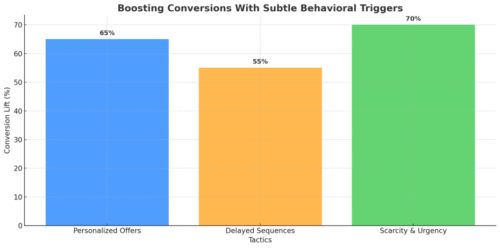
A ManyChat bot doesn’t just collect data—it can use behavior to gently nudge people toward a “yes.” The magic is in the subtlety. Done right, you create a natural path that feels conversational, not salesy.
I’ve found that these triggers often outperform flashy ads because they respect the rhythm of the customer’s decision-making.
Personalizing Offers Based on Micro-Actions
Micro-actions are the tiny steps users take before a purchase: watching a video, clicking a product detail, or even hovering over shipping info. With ManyChat, you can track these clicks and immediately tailor the next message.
For example, let’s say someone clicks “View Product Details.” From the flow, set an action: Add Tag: Interested in Product A. Now, the next time you message them, you can reference that product directly:
“Hey, noticed you were curious about Product A—want me to send you a quick discount code?”
It feels like you’re paying attention, not spamming. I’ve used this tactic to send highly personalized offers, and conversion rates were 2–3 times higher than a blanket “Sale starts now!” message.
Using Delayed Sequences to Nurture Without Annoying
Not everyone buys on the first click, and hammering them with daily messages is the fastest way to lose trust. What works better is a nurturing sequence with natural pauses.
Inside ManyChat, go to Automation > Sequences > Add Step > Set Delay. I usually set:
- 1 day delay for a gentle reminder.
- 3 days delay for additional value (like a tip, tutorial, or story).
- 7 days delay for a special offer.
This way, your bot becomes a thoughtful guide instead of a pushy salesperson.
I remember running a campaign where users got a tip about skincare one day, a reminder about healthy habits three days later, and only after a week, a subtle product recommendation. Sales went up, unsubscribes went down.
The pacing matters more than people realize—it’s like dating. Move too fast, and you scare them off. Move too slow, and they forget you exist.
Driving Scarcity and Urgency in a Natural Way
Scarcity works because it taps into our natural fear of missing out, but it has to feel real, not gimmicky. ManyChat makes it simple to add urgency without shouting “BUY NOW!”
Here’s a practical setup:
- In a campaign flow, use a Condition Block to check if a certain number of coupons are left.
- If yes, message: “Only 12 discount codes left—want me to save you one?”
- If no, gracefully pivot: “Looks like the codes are gone, but I’ll let you know next time first.”
This creates real urgency and transparency. People trust you more because you’re not faking it. I once ran this during a flash sale and had customers messaging me back, begging to be put on the “next list.” That’s the power of honest scarcity.
Pro tip: Treat your ManyChat bot like a mix of data scientist and friendly shop assistant. It listens, remembers, and nudges at the right time. If you master these two areas—data collection and behavioral triggers—you’re already ahead of most bot users who never go beyond “automated replies.”
Automating Customer Support Beyond FAQs
A ManyChat bot isn’t just about answering “What are your business hours?” on repeat. It can step up as a true support assistant, guiding customers through multi-step issues, escalating when needed, and saving you real money while keeping customers happy.
Let me break down how to use it effectively.
Handling Multi-Step Problem Solving With Ease
The magic of ManyChat is that you can create flows that behave like interactive decision trees. Instead of a static FAQ list, you can build conversations that adapt to the customer’s path.
For example, let’s say you run an online clothing store. A customer types, “My order didn’t arrive.” Instead of sending a dead-end response, your bot can walk them through steps:
- Ask for their order number using a User Input block.
- Store that number in a Custom Field.
- Check if the order is marked shipped in your integrated e-commerce system.
- Provide tailored responses: “Looks like it shipped on Tuesday—here’s your tracking link.”
From the dashboard, it’s as simple as Automation > Flows > Add User Input > Save to Field. No coding, just thoughtful structuring.
I believe this is where ManyChat shines. It doesn’t just answer questions, it actually solves them step-by-step—like a mini customer service rep who never takes a break.
Routing Complex Issues to Human Agents Seamlessly
Of course, some situations are too messy for automation. That’s why I suggest setting up smart handoffs.
Inside ManyChat, use a Condition Block: if a customer types something like “refund,” “angry,” or “speak to human,” you can trigger Action > Notify Admins or Open Live Chat.
Here’s how I usually structure it:
- Step 1: Bot tries to solve the issue with a simple flow.
- Step 2: If the user isn’t satisfied (e.g., clicks “Did this solve your issue? → No”), the bot routes them to a live agent.
- Step 3: The agent gets notified instantly inside the ManyChat Live Chat tab or through email/Slack integration.
This prevents that classic frustration of customers stuck in endless bot loops. I’ve had clients message me saying customers actually thanked them for the bot because it saved them time before getting to a human.
Reducing Support Costs While Improving Response Time
The real business case? A ManyChat bot cuts costs without cutting quality. Let’s say you get 500 support messages a week. If the bot can handle 60% of them (like order tracking, store hours, return policy), that’s 300 fewer tickets your team has to touch.
Even if each ticket takes 5 minutes, that’s 25 hours of human time saved weekly. And because the bot answers instantly, response times drop from hours to seconds.
I suggest creating a quick internal chart like this to track impact:
| Support Type | Handled by Bot | Handled by Human | Avg. Response Time |
| Order Tracking | 100% | 0% | Instant |
| Return Policy Questions | 90% | 10% | 5 sec vs 10 min |
| Refund Requests | 10% | 90% | 1 min vs 30 min |
When you see the numbers, it’s obvious: the ManyChat bot isn’t replacing your team—it’s freeing them to focus on the harder, higher-value conversations.
ManyChat Bot as a Content Distribution Engine
If you’re creating content—blogs, videos, podcasts—but struggling to get people to see it, a ManyChat bot can be your secret distribution channel.
Messenger feels personal, and when used well, it delivers your content in a way that doesn’t feel like spam. Let me show you how.
Delivering Bite-Sized Learning Through Messenger
One of the most underrated features of ManyChat is drip education. You can break complex content into small, snackable lessons and deliver them automatically.
For example, I once helped a fitness coach set up a “7-Day Workout Challenge.” Instead of dumping all the exercises in one post, we created a sequence:
- Day 1: Quick warm-up video.
- Day 2: Core workout GIF.
- Day 3: Nutrition tip with a link to a recipe.
Inside the dashboard, it’s Automation > Sequences > Add New Step > Delay > Send Message. Each step drips out like a personal trainer nudging you daily.
Users loved it because it felt like daily accountability, not just a static PDF download.
Driving Traffic to Blogs, Videos, and Podcasts
Messenger can act as your distribution “engine room.” Instead of hoping people stumble upon your content, you can drive them there directly.
Here’s my go-to setup:
- Create a Broadcast with a teaser message.
- Add a Button that links to your blog post, YouTube video, or podcast episode.
- Use UTM parameters on the link so you can track clicks in Google Analytics.
For example: “I just released a new post on 5 email mistakes to avoid. Want the link?” feels conversational and opt-in, rather than blasting links.
In my experience, CTR from Messenger messages is often 2–3 times higher than email because people see it like a text message.
Using Interactive Quizzes to Increase Engagement
Quizzes are gold for both engagement and insights. With ManyChat, you can create quiz-style flows that feel fun while also driving users toward your content.
Example setup:
- Send Question: “Which marketing style fits you best?”
- Buttons: “Creative,” “Data-Driven,” “Relationship-Based.”
- Tag Users based on answers.
- At the end, deliver results + link to a blog or video tailored to their outcome.
Not only do people engage more, but you also gather valuable segmentation data in the process. I once ran a “What’s Your Productivity Style?” quiz, and it not only boosted engagement rates but gave me a map of my audience’s personality types for future content planning.
Quizzes turn your bot into a two-way street instead of a broadcast channel. And that sense of fun builds loyalty, because customers remember how your brand feels.
Pro tip: think of your ManyChat bot as a media assistant, not just a chatbot. It can drip-feed knowledge, guide people to your best content, and even turn quizzes into conversion engines. If your content isn’t being seen, this is the hidden advantage you can unlock right now.
Strengthening Brand Loyalty Through Micro-Experiences
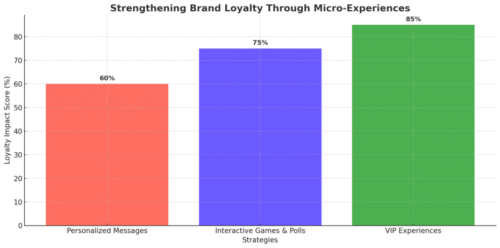
Loyalty doesn’t come from one big campaign—it’s built in the little interactions that make people feel seen.
A ManyChat bot can deliver these “micro-experiences” at scale, creating personal moments that leave lasting impressions.
Making Personalized Birthday or Holiday Messages Matter
One of the simplest but most powerful uses of a ManyChat bot is sending personalized greetings. Customers expect marketing messages, but when they get a thoughtful note on their birthday or during holidays, it feels human.
Here’s how I usually set it up:
- Use a User Input block to ask for their birthday when they first engage.
- Save it into a Custom Field: Birthday.
- Inside Automation > Rules, create a trigger based on that field to send a “Happy Birthday” message.
To make it stand out, don’t just say “Happy Birthday.” Offer something of value—a coupon, free resource, or exclusive gift. For example:
“Happy Birthday, Sarah 🎉 As a little gift, here’s 20% off your next order. Thanks for being part of our family!”
It’s personal, it’s kind, and it strengthens trust. I’ve seen businesses get higher redemption rates on birthday offers than on standard promotions because it feels special.
Creating Interactive Games and Polls Inside Messenger
Gamification isn’t just for apps—you can bring it into Messenger. Quizzes, trivia, or quick polls add fun to your brand and keep customers coming back.
Example flow setup:
- Send a message like: “Want to play a 2-question trivia game for a chance to win free shipping?”
- Use Quick Replies as answer options.
- If they get it right, tag them as “Trivia Winner” and deliver a discount code.
Polls work great too. I once built a flow for a restaurant where users voted on the “next week’s special.” Customers loved the power of choice, and sales of that dish spiked because people felt invested.
This isn’t just engagement—it’s bonding. Games make people smile, and when a brand makes you smile, you don’t forget it.
Encouraging Repeat Business Through VIP Experiences
VIP treatment doesn’t have to mean velvet ropes. With ManyChat, you can create a sense of exclusivity for loyal customers.
Here’s one approach I recommend:
- Track frequent buyers by tagging them every time they purchase.
- When they reach a threshold (e.g., 3 purchases), trigger a flow: “Congrats—you’ve unlocked VIP status!”
- Deliver perks: early access to new products, special discounts, or sneak peeks.
From the dashboard, this can be done with Condition Blocks and Tag-Based Automation. It feels like magic to the customer, but it’s just smart setup behind the scenes.
I believe VIP experiences are one of the best ways to encourage repeat business. People love belonging to something exclusive, even if it’s just a Messenger list that gets early access.
Unlocking Revenue Streams With Smart Integrations
Your ManyChat bot isn’t just a chat tool—it can plug into other platforms to create entirely new revenue streams.
When you connect it with e-commerce, automation tools, and upsell strategies, it becomes a profit-driving machine.
Connecting ManyChat Bot to E-Commerce Platforms
If you run an online store, connecting ManyChat directly to Shopify or WooCommerce is a game-changer.
From Settings > Integrations > Shopify, you can:
- Pull customer order details directly into Messenger.
- Send automated “Your order has shipped!” updates.
- Trigger product recommendations based on past purchases.
For example, if someone buys running shoes, the bot can automatically suggest socks or a fitness tracker a week later. It feels thoughtful and increases your average order value.
I’ve watched stores add thousands in extra revenue just by connecting the bot to their checkout system. It’s like having a sales assistant who always knows what to suggest.
Using Zapier to Automate Back-End Workflows
Zapier is the secret sauce for making your ManyChat bot smarter. By connecting ManyChat to over 5,000 apps, you can automate tasks you didn’t think were possible.
Some of my favorite “Zaps”:
- When someone fills out a lead form in Messenger, automatically add them to Google Sheets.
- Send Slack alerts to your team when a VIP customer makes a purchase.
- Push Messenger leads into your CRM without manual entry.
Inside ManyChat, you’d use Action > Trigger Zap and choose the workflow you want in Zapier.
This isn’t just convenience—it’s efficiency. I once saw a coaching business save 10+ hours a week because leads flowed directly from Messenger to their CRM with zero copy-pasting.
Building Upsell Funnels Directly in Messenger
Messenger is a natural upsell channel because it’s conversational. Instead of a pushy “Buy this too!” popup, you can have your bot guide the customer gently.
Here’s a simple upsell funnel:
- Customer completes a purchase.
- Bot sends: “Thanks for your order! Want me to show you a special bundle that pairs perfectly with what you bought?”
- If yes, present a one-click upsell button linked to checkout.
This works beautifully for products like accessories, bundles, or add-ons. I’ve seen conversion rates of 10–15% on these Messenger upsells—way higher than traditional website popups.
Internal Productivity Hacks Few Talk About
Most people only think of ManyChat as customer-facing, but it can also make your internal operations smoother.
I’ve seen businesses use it to streamline team communication, gather feedback, and even track project progress—all inside Messenger.
Streamlining Team Communication With Automated Alerts
You can set up ManyChat to notify your team whenever something important happens. For example:
- A new lead opts in.
- A high-value customer makes a purchase.
- A negative keyword (like “refund”) gets typed.
Inside a flow, just add Action > Notify Admins and choose Messenger, SMS, or email.
This way, your team isn’t digging through dashboards—they get real-time alerts where they already are. I once worked with a sales team that closed deals faster just because they got immediate Messenger alerts whenever a hot lead engaged.
Gathering Employee Feedback or Polls Instantly
ManyChat isn’t just for customers—you can create internal flows to poll your team.
For example, you can send out a weekly poll:
“Which project should we prioritize this week?
- Option A: Campaign Launch
- Option B: Product Testing
- Option C: Training”
Each answer can be logged in a Google Sheet via Zapier. It turns Messenger into a lightweight feedback tool without needing extra software.
I’ve used this myself to get quick employee check-ins like “How’s your workload this week?” It’s fast, informal, and people respond more honestly because it feels conversational.
Tracking Project Updates Without Extra Software
Project management tools are great, but sometimes they’re overkill. For small teams, a ManyChat bot can serve as a simple progress tracker.
Here’s how I’ve set it up:
- Each team member gets a weekly reminder message.
- They reply with their current status (e.g., “50% done,” “Blocked,” “Completed”).
- Their answers are saved into a Google Sheet for review.
From the dashboard, it’s Automation > Sequences > Add Reminder Flow. No complicated apps needed.
This hack saves time because it keeps updates inside the same platform people are already using. And it avoids the “forgot to update Trello” syndrome that slows projects down.
Pro tip: don’t just think of your ManyChat bot as customer-facing—it can also be your team’s invisible assistant. Whether it’s alerting you to leads, running quick polls, or keeping track of projects, the bot quietly keeps everything moving.
Leveraging ManyChat Bot for Market Research

Your ManyChat bot can double as a research assistant. Instead of paying for clunky surveys or waiting on long reports, you can collect real insights directly from your audience in Messenger.
The best part? People are far more likely to respond because it feels like a conversation, not homework.
Running Quick Surveys to Validate Product Ideas
Before you spend time and money building a new product, why not test the waters with your audience? ManyChat makes this surprisingly easy.
Here’s my go-to method:
- Build a Flow with a simple question: “If we launched a [product/service], would you be interested?”
- Add Quick Replies like “Yes,” “Maybe,” “No.”
- Tag users based on their choice (e.g., “Interested in Product A”).
Inside Audience > Filter by Tag, you’ll instantly see how many people are excited about the idea. I’ve used this approach with small e-commerce shops that were considering new product lines. A quick Messenger survey told them which ideas had traction—saving them thousands on stock that would have flopped.
The key is to keep it short. One or two questions feel fun and conversational; long surveys just feel like work.
Testing Price Sensitivity Through Messenger Campaigns
Pricing can make or break a launch. With ManyChat, you can test it quietly and quickly without running a big, public campaign.
Here’s a scenario:
- Send one segment a flow offering a product at $29.
- Send another segment the same product framed at $39 with added “premium” positioning.
- Track click-through and purchase rates directly.
From the dashboard, it’s as simple as Broadcast > Send to Segment > Add Tag for each group.
I remember one campaign where we thought a $19 offer would crush it. Turns out, the $29 “premium” version outsold the cheaper one because people perceived more value. Messenger let us discover that insight in days instead of weeks.
Understanding Customer Sentiment in Real Time
One of my favorite hacks is using ManyChat to gauge mood. Instead of generic surveys, you can drop in micro-sentiment checks.
Example flow:
“Quick check-in: How are you feeling about your last purchase?”
- Option 1: “Loved it ❤️”
- Option 2: “It was okay 👍”
- Option 3: “Not happy 😔”
This data gives you live feedback. If someone clicks “Not happy,” you can trigger an Action > Notify Admins to follow up right away. It’s not just market research—it’s customer retention.
You can even chart the responses over time. For example:
| Sentiment | % of Responses |
| Loved it ❤️ | 68% |
| It was okay 👍 | 22% |
| Not happy 😔 | 10% |
That’s actionable insight you can act on immediately.
Enhancing Ad Performance With Messenger Retargeting
Messenger isn’t just for conversations—it’s a powerful ad booster. When you sync your ManyChat bot with ads, you can retarget people in ways that feel personal, not pushy.
Syncing Facebook Ads With Messenger Sequences
Instead of sending cold traffic to a landing page, you can direct Facebook ad clicks into a ManyChat flow.
Here’s how:
- Inside Ads Manager, create a “Click to Messenger” campaign.
- Connect the ad to a ManyChat flow.
- Start the conversation with a warm, value-driven message (not a sales pitch).
For example: “Hey! Saw you were interested in healthy recipes. Want me to send you a free 3-day meal plan?”
This approach builds your Messenger audience and nurtures leads right away. I’ve seen cost per lead drop by 30–40% compared to traditional landing pages.
Reducing Cart Abandonment With Gentle Reminders
Cart abandonment is brutal—but Messenger can reduce it with a human touch.
Here’s a setup that works well:
- Use Shopify or WooCommerce integration.
- When someone abandons a cart, trigger a Messenger message like:
“Looks like you left something behind. Want me to save it for you?” - Add a button back to their cart with a limited-time incentive.
It feels like a friendly reminder instead of an aggressive chase. One store I worked with recovered 18% of abandoned carts using this flow—numbers most email campaigns can’t match.
Personalizing Retargeting Messages for Higher ROI
The beauty of ManyChat is that you can retarget based on behavior.
For example:
- Someone clicked on a product but didn’t buy → Send them testimonials about that product.
- Someone purchased once → Send a Messenger upsell for a complementary item.
- Someone hasn’t engaged in weeks → Send a gentle “We miss you” message with a perk.
Inside Automation > Conditions, you can set these paths without coding. This keeps your retargeting campaigns feeling thoughtful and relevant, not spammy.
I always remind people: Messenger is personal. If you respect that intimacy, your ROI goes up because your messages feel like conversations, not ads.
Building Long-Term Relationships at Scale
The real power of a ManyChat bot isn’t the quick wins—it’s the ability to build long-lasting customer relationships.
With the right structure, you can nurture thousands of people at once while still making it feel personal.
Creating Evergreen Sequences That Still Feel Human
Evergreen content is gold because it runs on autopilot, but the danger is it can feel robotic. The trick is writing flows that sound conversational and inserting personal touches.
Here’s what I recommend:
- Use delays that mimic natural conversation (e.g., 2 minutes instead of instant reply).
- Add personal phrases like “I thought you’d like this” or “Want me to send you a tip I use myself?”
- Refresh your sequences every few months to keep them from going stale.
I once helped a coaching brand build a 12-week evergreen sequence. Clients said it felt like the coach was personally messaging them, even though it was fully automated. That’s the sweet spot.
Combining Chat With Email for Omnichannel Reach
Messenger is powerful, but you don’t want to rely on one channel. The smart move is combining it with email for a true omnichannel experience.
From Flows > Action > Ask for Email > Save to Custom Field, you can collect addresses inside Messenger. Then, sync them with your email provider using Zapier.
Practical use case:
- Send a teaser tip in Messenger.
- Deliver the full guide by email.
- Follow up in Messenger a few days later with a quick check-in.
This creates a loop where each channel supports the other. In my experience, customers who interact across both Messenger and email convert at much higher rates.
Making Automated Messages Sound Conversational
Automation only works if it doesn’t feel automated. I always tell people: write like you’re texting a friend, not drafting a corporate email.
Some simple rules I use:
- Short sentences.
- Emojis sparingly (just enough to feel friendly).
- Questions instead of statements: “Want me to send you that link?” feels more engaging than “Here is the link.”
Even adding typing delays in ManyChat makes a huge difference—it gives the illusion of a real person on the other end.
When customers feel like they’re in a genuine conversation, they’re far more likely to stay connected for the long run. And that’s what turns casual subscribers into loyal fans.
Pro tip to carry forward: don’t think of ManyChat as just a marketing tool. When you use it for research, ads, and long-term relationship building, it becomes the heart of your customer experience.


